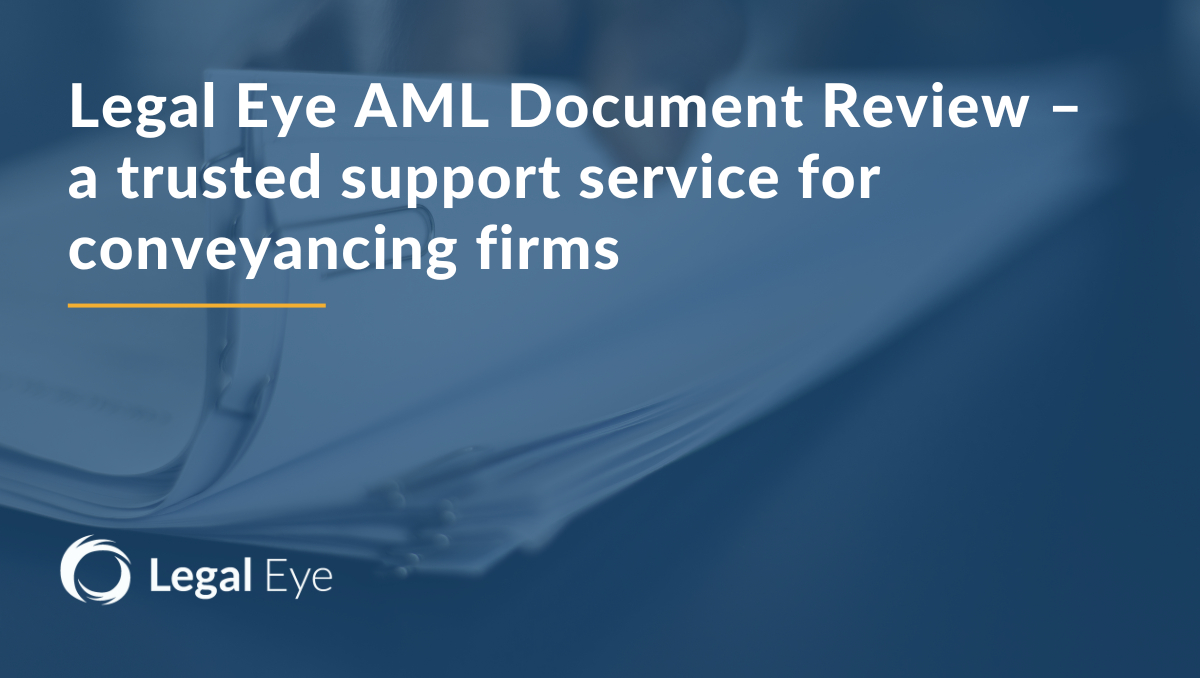The Conveyancing Association (CA), the leading representative body for the conveyancing industry, has today (16th…
Laura Wood, Client Advisor, LexisNexis Enterprise Solutions
As a paralegal in a previous professional life, I am well versed in the pained manual processes conveyancing can entail. The inefficiencies, time delays, and friction experienced when onboarding a new client, or delivering the final paperwork, have no place in the modern law firm. And yet, with so many software applications out there, sometimes the solutions available can be confusing and seemingly more hassle than the proposed advantages are worth…but it really doesn’t have to be!
Proving the potential of digital conveyancing
Do you remember when your Outlook calendar became accessible on your mobile phone? Or the first time you didn’t need to fire up your PC to send an email because you could use your smartphone? Or, when you could log in to your bank account via your mobile and manage your finances on the go? These examples of simplistic, non-disruptive innovations have made such a positive impact and have so much influence in today’s world that we would be lost without these capabilities.
So, why not apply the same logic to conveyancing?
With sector-specific, tailored software applications available in the legal-tech market, you can ‘non-disruptively’ choose a solution that integrates with the likes of your Lexis® VisualfilesTM case management system (CMS), and other key business systems, to help alleviate your firm’s administrative conveyancing woes.
Let’s take a closer look at how digitising the conveyancing process can help law firms make vast improvements to their efficiency, compliance, and business profitability.
Client onboarding – Manually, this is a tedious and time-consuming process which carries a high level of risk unless done meticulously. Even then, where manual data inputting is involved, mistakes will most likely occur, however, implementing a digital approach simply eliminates this risk.
Consider the volume of work involved. The sheer number of forms to fill out and documents to upload i.e. source of funds, bank statements, utility bills etc., means tasks can easily be forgotten. Furthermore, when these tasks are entangled in the current, constantly changing, and stringent regulatory environment; affecting the likes of Know Your Customer (KYC) and Anti-Money Laundering (AML) legislations, unnecessary pressures are inevitably borne by the conveyancing team. Expectations for legal professionals to accurately spot fraud for example – an area in which most aren’t trained – become the norm.
Let’s take client identification as an example. Rather than the client attending the office in person, using a digital onboarding system, they can complete the necessary ID checks with a simple selfie from the comfort of their home, at a time that suits them. Once uploaded to the relevant platform, the system’s biometric identity verification capability checks for genuine evidence, sifting through multiple data sources to verify if the individual exists, and if they’re at high risk of fraud; finally, inspecting the authenticity of the photo to match it to the individual.
Digging a little deeper, I reached out to the eCOS (Electronic Client Onboarding Solution) Head of Product, David Rawson, at InfoTrack; a Visualfiles third- party digital conveyancing suite of solutions, who shared expert insight into how a digital onboarding tool like eCOS can benefit any law firm:
“The efficiency these digital processes deliver is easy to grasp. Documentation checks can happen automatically, within minutes, with no human intervention. This significant reduction of time means a client could be onboarded within 24 hours!
Similarly, if we look at the number of forms needed during the process, such as the transfer, contract, and Stamp Duty Land Tax (SDLT) form, the available data in the system can be used to populate said relevant forms. For instance, at the point in the transaction when the SDLT form is needed, it will already be up to 95% pre-populated, dramatically reducing the effort needed in comparison with the traditional, manual process required when inputting the information via the HMRC website.”
Reporting and compliance
Complete with an audit trail, reporting functionality is an equally important part of digital conveyancing. The firm can tangibly demonstrate that all reasonable measures were taken to meet the compliance requirements, should a regulatory investigation arise.
The Solicitors Regulation Authority (SRA) is actively monitoring firms to ensure they are satisfactorily fulfilling their KYC and AML obligations, regardless of whether financial crimes have been committed; issuing fines to firms simply for not suitably demonstrating all the necessary measures to fulfil their AML compliance obligations. This is a concern amongst the small to medium sized law firm community, echoed in the latest LexisNexis Bellwether Report, which quoted 69% of respondents indicated keeping up to date with regulatory compliance as one of the biggest challenges for the coming year – affirming a manual approach isn’t worth the risk!
Not only is the SRA able to issue fines or sanctions for the failure to adhere to the necessary obligations, but HM Land Registry is also able to do the same. With property fraud at an all-time high, this is a real concern for the sector, however, by adopting digital conveyancing, firms can safely reach HM Land Registry’s ‘Safe Harbour’ digital identity standard for client identity verification. A key requirement is that the NFC chip in the passport is used for identity verification, instead of the image in the passport. If firms carry out the steps outlined in the digital identity standard, the conveyancer can ensure that adequate identity checks are fulfilled and be assured that HM Land Registry will not pursue any recourse claim due to the registration of a fraudulent transaction.
Flexible integration with case management
Digitising conveyancing efforts and simultaneously integrating the solution into your CMS gives the firm a central, secure, and structured repository for all data. No more fragmented and scattered data across shared drives, Outlook, Excel sheets, and physical files. Lawyers can easily search for information, access current and historical data, and easily combine and collate conveyancing documents associated with each case across the firm. Gone are the days when this information only exists in lawyers’ heads and physical files.
This is where the versatility of Visualfiles and its ability to integrate with other industry recognised, digital conveyancing tools such as Rubix, InfoTrack and Perfect Portal, comes into its own.
Referring to InfoTrack, David adds, “By integrating with a case management system, the administrative burden for conveyancers is reduced, allowing them to simultaneously have full visibility of how transactions track towards completion.”
Seamless Communication
Timely communication across the conveyancing chain can make or break a positive experience. Digital conveyancing ensures intuitive and seamless communication. For instance, with some digital conveyancing software, lawyers can directly communicate with clients, mortgage brokers, mortgage lenders, estate agents, and other related third parties via a WhatsApp-style chat to help speed up the transaction process. Time savings are also made by removing the need for numerous telephone calls and emails between all involved in the transaction, with updates regarding progress.
Other benefits of digitising the conveyancing process includes the use of Digital signatures. The age-old problem of the exchange of contracts being stalled due to untimely signatures, or a requisition being raised by the Land Registry for an illegible signature, are things of the past. Lawyers can create digital envelopes with multiple documents to multiple parties for signature, directly from their CMS, regardless of device. When considering InfoTrack’s capabilities directly, David adds, “What’s more, once signed, the documents automatically import into the case history in Visualfiles, made possible through InfoTrack’s integration with DocuSign.”
For more information on InfoTrack’s Visualfiles integration – find out more here!
Transitioning to digital conveyancing is easy
The value of digital conveyancing is irrefutable for law firms. Often the barrier to taking the plunge is resistance to change – i.e., the perceived disruption that may entail and the mindset of ‘if it ain’t broke, don’t fix it?’. The reality is, that the traditional conveyancing process in today’s world is broken, and Lawyers need to realise that a digital conveyancing platform isn’t disruptive, with proven solutions, that embed industry best practice and governmental guidelines and frameworks at their fingertips, often, the technologies available are supremely easy to adopt.
Learn more here. https://tinyurl.com/5n7599am




